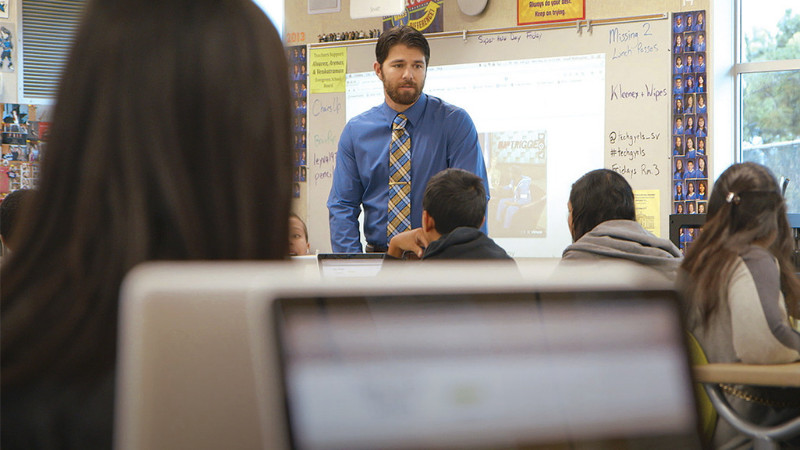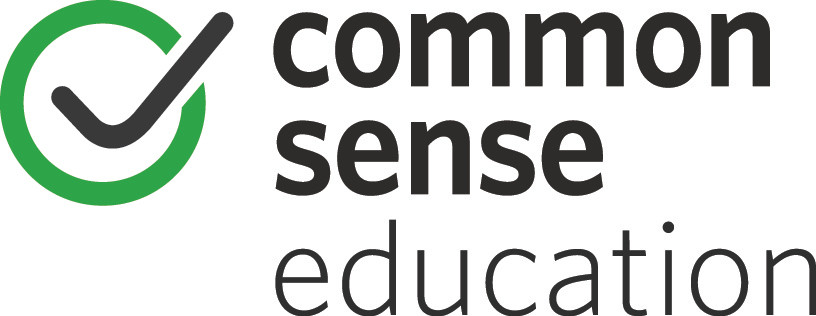Which Digital Citizenship Skills Do Students Need Most?
The data suggest that teachers and schools should consider adopting a more holistic approach to digital citizenship.

Digital citizenship has emerged as a top priority in U.S. schools and classrooms. In fact, six out of 10 educators are teaching some kind of digital citizenship skill every month. To find out more about this growing effort, we've completed a first-of-its-kind research report, The Common Sense Census: Inside the 21st-Century Classroom. This research gives a unique window into today's classrooms, including the challenges and opportunities teachers see in managing technology and using it to enhance student learning.
Though digital citizenship encompasses a range of skills and habits of mind, we've observed that often teachers and schools design digital citizenship instruction with a protectionist approach, emphasizing anti-cyberbullying education and internet safety. The new findings confirm this is true: Of the six topics covered in the Common Sense K–12 Digital Citizenship Curriculum, teachers most often address digital drama, cyberbullying, and hate speech (taught by 46 percent of teachers) and privacy and safety (taught by 44 percent of teachers).
Include opportunities that empower students with thinking skills and strategies to evaluate what they find online, along with support in developing self-awareness and self-regulation as they learn to manage their own tech use.
Despite a tendency to focus on safety issues, teachers are keenly aware of how student needs are changing due to our increasingly connected culture. Teachers reported their top technology-related concern was that "students lack skills to critically evaluate online information," which 35 percent observed "frequently" or "very frequently" in their classrooms. Their second-largest concern was that "technology distracts students from the learning experience and interferes with learning," reported by 26 percent of teachers as "frequent" or "very frequent." In contrast, only 13 percent of teachers in the Common Sense study observed cyberbullying "frequently" or "very frequently" in their classrooms.
While we aren't suggesting teachers throw out their cyberbullying lessons, the data does suggest teachers and schools should consider adopting a more holistic approach to digital citizenship. Instruction needs to include opportunities that empower students with thinking skills and strategies to evaluate what they find online, along with support in developing self-awareness and self-regulation as they learn to manage their own technology use.
The following three research-based tips offer fresh guidance on how to make your digital citizenship instruction the most relevant and effective it can be:
1. Make news and media literacy education a priority.
As the Common Sense study suggests, teachers know that students are struggling with news and media literacy. For students to become informed citizens who are able to distinguish among fact, opinion, and misinformation, media literacy education is essential. Fortunately, these skills are broadly applicable no matter what content area you teach: whether you're digging into research projects in ELA, investigating how scientific misconceptions spread online in biology, or analyzing social media's impact on elections in U.S. history. Try adding a news literacy lesson to a relevant unit, or find ways to incorporate media-analysis strategies into your existing lesson plans.
Tools and ideas to transform education. Sign up below.
2. Model and encourage media balance in the classroom.
Teachers' second top technology-related concern was digital distraction in the classroom. Add to this the statistic that nearly half (47 percent) of teens report feeling "addicted" to their phones and it seems clear that students need some help with media balance.
We've long advocated for device-management plans as opposed to bans in the classroom. While this can take some work for teachers to put in place, it allows the classroom to be a place to model and practice intentional and mindful use of devices. Teachers can also empower students to take control of their own media use through media balance lessons that focus on self-reflection and critical analysis of how media contributes to their lives and relationships. Students can develop individual plans for healthy media balance and practice these skills in and out of the classroom.
3. Empower upstanders with habits of mind.
Though cyberbullying and hate speech didn’t surface as the most pressing technology-related concerns for educators, the rates at which teachers observed these issues in their classrooms is significant. The frequency of cyberbullying and online hate speech increased with grade level, with nearly half of middle and high school teachers reporting that cyberbullying occurred at least occasionally in their classrooms. Regarding online hate speech, about one in 10 middle and high school teachers said it happened at least occasionally in their classrooms.
Whether you teach dedicated lessons on cyberbullying and hate speech or address these topics more informally when teachable moments arise, it's helpful to focus on what students can do as opposed to what they shouldn't do. Encourage students to pay attention to "red flag feelings": when something happens on digital media that makes them feel uncomfortable, worried, sad, or anxious. Habits of mind like "slowing down," "exploring different perspectives," "envisioning options and possible impacts," and "taking action" can prepare students to recognize and respond to cyberbullying when they encounter it.
Source: Which Digital Citizenship Skills Do Students Need Most?
Erin Wilkey Oh is the Executive Editor, Education Content and Distribution for Common Sense Education

